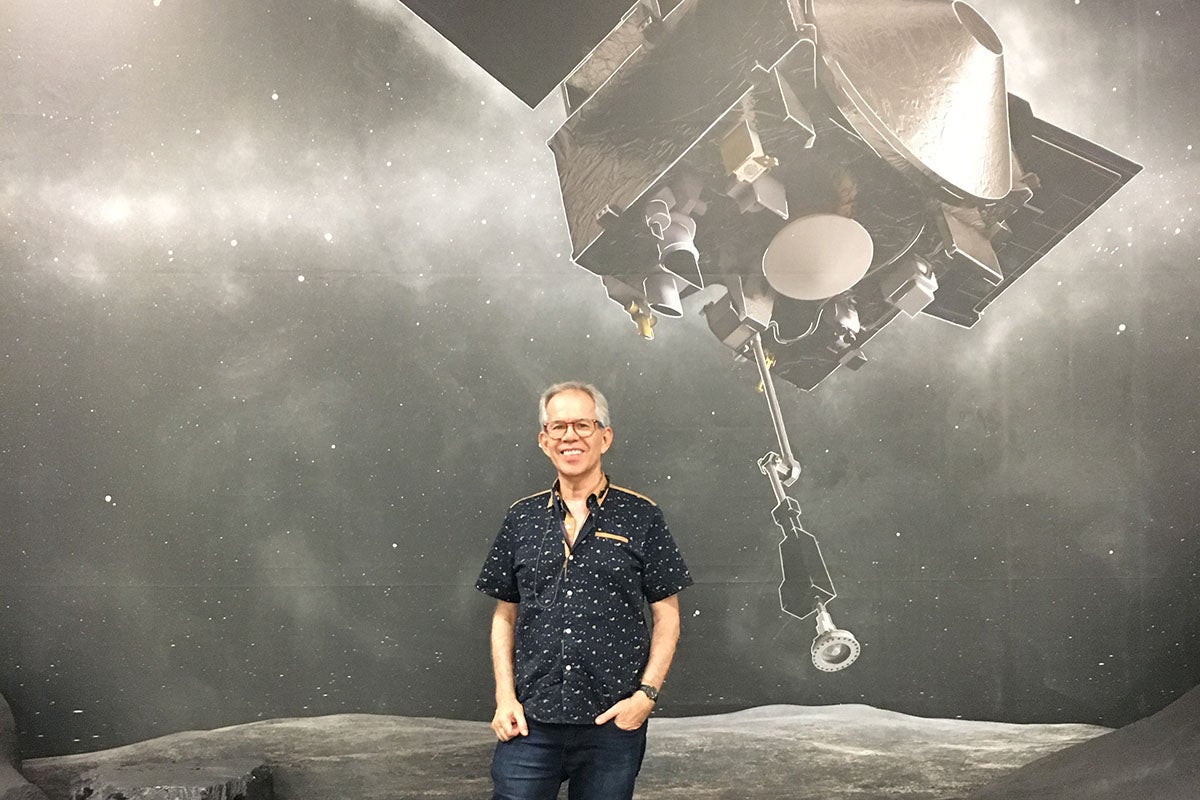Thirty-seven students will have a once-in-a-lifetime opportunity this semester to observe what it takes to be part of a historic NASA mission.
UCF physics Professor Humberto Campins is part of NASA’s OSIRIS-REx mission, which aims to bring back to Earth a sample from asteroid Bennu, which is between Mars and Jupiter. The near-earth asteroid could pose a hazard to the planet sometime in the future, but because of its location may hold clues about how the solar system formed. The attempt to recover a sample from an asteroid is a first for NASA.
The mission is being led by the University of Arizona in Tucson. The spacecraft is expected to perform the “touch and go” maneuver to collect a sample in October. It’s the climax of a mission 10 years in the making.
Campins, an international expert on asteroids, is part of the imaging team and he temporarily relocated to Tucson to avoid travel back and forth from Florida during the pandemic. He didn’t want to risk getting sick and missing the big moment. Then he had an idea: His move could give students an amazing opportunity to not only hear about concepts and absorb book knowledge, but to get a first-hand look at science in action.
“Because I can teach remotely [during the pandemic], it provided me a golden opportunity for my students to live a NASA mission with me,” says Campins, who is leading the Comets, Asteroids and Meteorites class.
Campins kicked off the semester Tuesday via Zoom with a lecture that began with a single slide. It had the phrase “Welcome to an Unusual Semester” on it. The word “unusual” was crossed out. On the next line it said “Welcome to a Unique Semester,” but “unique” was crossed out. On the final line it said “Welcome to a Historic Semester.”
“This is a historic time in so many ways,” Campins says. “There’s a lot of loss, but there are also moments of opportunity. This is the most exciting time of my career. Nature is surprising us and there is excitement in that. I want to share that with my students and there’s no better way than doing it right from where it is happening.”
Campins promises that his students will get to hear about the mission in real time and he plans to provide a tour of the facility, which is not open to the public. The students will also get to hear about how scientists collaborate, argue and resolve disagreements.
“They’ll get to hear about it all,” he says.
The students will also have to keep up. Aside from OSIRIS-REx, Japan’s Hayabusa2 is on its way back from asteroid Ryugu with a sample. Ryugu is located between Earth and Mars and the Japanese Space Agency mission collected the sample in 2019. The information expected from those missions and the data already collected from the European Space Agency’s Rosetta mission to comet Churyumov-Gerasimenko should keep the students busy. This will all be part of class discussions.
The OSIRIS-REx mission has already made news. Several peer-reviewed papers in the journals Nature and Science have been published based on observations made getting to Bennu.
“There are a few more surprises we’ll be sharing very soon,” Campins said. “And we’ll have to see what else we find when we actually complete the mission. My students are going to be among the first who will get to digest and discuss what we are publishing. For scientists, it doesn’t get better than this and I hope my students get a taste for it and continue to pursue it.”




